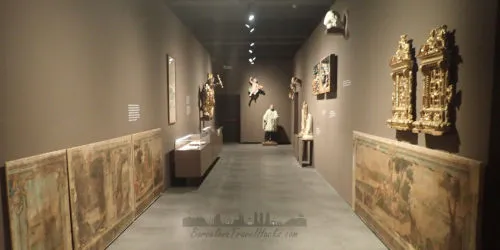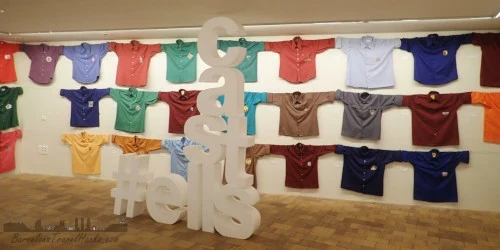Warning: Undefined array key "HTTP_ACCEPT_LANGUAGE" in /home/barcjkkl/public_html/App/Config/MySQL/language.php on line 32
Deprecated: explode(): Passing null to parameter #2 ($string) of type string is deprecated in /home/barcjkkl/public_html/App/Config/MySQL/language.php on line 36
Valls Calçots Festival | Fiesta Calçotada de Valls
The epicentre of Calçots is the town of Valls which hosts a Festa de la Calçotada anually with street cooking over open fire pits in town squares
Event Start: Jan 25, 2026 10:00h
Event End: Jan 25, 2026 17:00h
About Valls Calçots Festival | Fiesta Calçotada de Valls
The last Sunday of January is when the town of Valls celebrates the more than 100 year old Gran Festa de la Calçotada. This street festival based around the culture of Calçots features a varied program of events related to the cooking of calçots and the annual competition for the grower of the best calçots and the producer of the best sauce.
The Festa de la Calçotada de Valls forms part of the celebrations of Catalonia as a World Gastronomic Region, being the first outstanding event of the year.
What are Calçots?
Calçots are milder and less bulbous than onions and have a length of between 15 and 25 cm (white part) and a diameter of 1.7 to 2.5 cm at the root. Planted in trenches, like an onion, as a single bulb, and successively increasing the depth of the soil around the stems throughout autumn and winter. They sprout into 4-10 shoots, roughly the shape of small leeks or scallions.
The origin of the Calçot and its cooking method is in the town of Valls, Catalonia, Spain, where an annual event celebrates the harvest of calcots. Nowadays, thousands of eating gatherings cantered around the Calçots, called Calçotada, are celebrated around Catalonia.
Calçots are harvested in early spring / winter and served in Calçotadas in many of the rural and city restaurants in Catalunya. In these events, they are grilled over the embers of a wood fire, and served wrapped up in newspaper or served on terra cotta tiles and eaten.
To eat a Calçot, first peal off the outer burnt leaves to expose the sugary cooked white root. Dip the pealed Calçot in salvitxada sauce (sauce made with almonds, garlic, tomatoes and olvie oil). Tilt head back and lower the sauce dripping vegetable into the mouth and bite off and swallow a long section of the vegetable and sauce.
At a Calçotada you are served with a bib, gloves and wet wipes because eating them the traditional way is a messy but fun affair.
History and Culture of the Calçots
Calçot growing begins in the last months of the year when the seeds are sown in nurseries. When the seeds have germinated and sprouted the shoots are pulled out of the soil and replanted in another suitable soil, in which it continues to grow. Once it has sprouted like a normal onion, then it is pulled out again (in summer), you keep it for a few weeks and then you cut off the top green leaves and plant it again. According to the farmers, it is better to plant Calçots during the period of the old moon. As the plant grows, it must be covered, that is, surrounded by soil (this operation of covering the Calçots is repeated several times). The Calçots are preferably harvested between the months of November and April.
The regions of Alt Camp, Baix Camp, Tarragonès and Baix Penedès surrounding the town of Valls have particularly good soil for growing Calçots with these areas of Calçot growers receiving a Geographical Indication classification form the European Union for a food that is culturally significant and unique in terms to this region of Catalonia (like Champagne and Roquefort from France).
The best, most flavoursome Calçots can be bought in Valls as well as the red sauce. What you will find in Barcelona are skinny Calçots that once stripped of the outer shell contains a sliver of vegetable inside whereas the Calçots from Valls are at least 2cm thick and full of the sweet sugars that caramelise when cooked slowly over the embers of a wood fire.
Equally important to the farmers that grow the finest Calçots, the ladies that make the best sauce are also awarded prizes at the annual competition.
Image Gallery for Image Gallery For Valls Calçots Festival | Fiesta Calçotada de Valls
Click on any of the 48 images to open full screen gallery player
Visiting Valls Calçots Festival | Fiesta Calçotada de Valls
Now that you are probably salivating and a little bit scared about this strange dining experience, it is time to get yourself to Valls on the last Sunday of January. Once there, the important places in the Bari Vela de Valls to visit are:
- Plaça del Quarter: Artisan market selling Cheese, chorizo, fuet, cold sausages, honey, olive oil and other food products.
- El Pati Plaça: is where the prizes for the best Calçots growers and sauce makers are awarded in a ceremony at 14:00h. Surrounding the stage are stalls and street food vendors to taste local products and wines.
- Plaça del Blat: is a medieval galleried square where the winning Calçots are displayed with a team of ladies making the sauce for you to see how it is done and sample the sauces with bread.
- Carrer de Santa Úrsula: is where there are large fire pits set out in the streets with the Calçots being cooked by traditionally dressed tenders of the Calçot.
- Cooperativa agrícola de Valls: houses long dining tables and firepits for cooking Calçots and traditional Catalan meats such as Butifarra sausages.
- Museu Casteller de Catalunya: is a child friendly audio visual museum celebrating the Catalan tradition/sport of human towers.
- Museu de Valls: is an art museum with a collection of medieval art and modern contemporary art from local artists.
- Plaça de l'Oli: picturesque square with bars selling local food products.
- Cistelleria Roca: is a wicker and natural textiles goods store that opens on the day of the festival. You might want a wicker basket if your buying Calçots, sauce and wine to take home.
- To enjoy a Calçots meal consisting of:
- 12 cooked Calçots from IGP Calçot de Valls
- A 375 ml bottle of Castell d'Or cava (sparkling Catalan white wine)
- Calçots sauce from Salses Fruits
- Portion of Cristallino bread from Europastry
- Bottle of water
- An orange
- Desserts from Fleca Cal Cesc bakery
- A commemorative bib for eating the Calçots
- 2×1 promotion of tickets to the Casteller Museum of Catalonia
Book Calçots meal tickets in advance or purchase on the day locally at Plaça del Pati, Valls City Hall and Institut d'Estudis Vallencs. Note that there are long queues on the day so I recommend buying online in advance. The dining area is at Cooperativa agrícola de Valls.
Calçots and the sauce are Vegan and one of a few traditional Catalan food traditions that are 100% animal parts free. The cake included in the meal menu may contain dairy and or eggs.
What to take with you for What to take with you for Valls Calçots Festival | Fiesta Calçotada de Valls
To visit Valls for the Fiesta Calçotada take a warm jacket and wear sensible shoes for the uneven pavements in the centre of town. A small bag for hauling any wine, Calçots and sauce back to Barcelona.
Valls Calçots Festival | Fiesta Calçotada de Valls Summary of Prices Summary of Prices
Getting to Valls Calçots Festival | Fiesta Calçotada de Valls
Address: Plaça El Pati, Valls, 43800
- Take a Train or Bus to Valls From Barcelona:
- By Train: use a Renfe REGIONAL R13 From Barcelona Estacó de frança, Passeig de Grácia or Sants to Valls.
- By Bus: MonBus provide a fast direct bus service to Valls from Barcelona-Sants Bus terminal.
Due to engineering works occurring on the Regional train network (winter 2025) affecting trains to the Tarragona region, I took the bus in the morning to get to Valls at 10am then used the Regional train to get back from Valls.
Note that the bus cost €10.50 and you have to pay with cash when boarding the bus. The bus driver does not carry any change so make sure you have exact money.
The train ticket costs €8.00 each way.
If you want to go by car, check the Fiesta Calçotada de Valls map in the PDF documents section which has all the parking areas on the edge of Valls town centre.
7 Documents for Valls Calçots Festival | Fiesta Calçotada de Valls
Map for Valls Calçots Festival | Fiesta Calçotada de Valls
Weather for Weather for Valls Calçots Festival | Fiesta Calçotada de Valls
Mountain Forecast weather for
Where to stay overnight near Valls Calçots Festival | Fiesta Calçotada de Valls
2 Nearby Attractions to Valls Calçots Festival | Fiesta Calçotada de Valls

Museu de Valls | Valls Museum
Art & Antiquities museum of works by artists from Valls in the Gothic, Renaissance & Baroque periods through to the 20th century plus temporary exhibitions
Read more >
